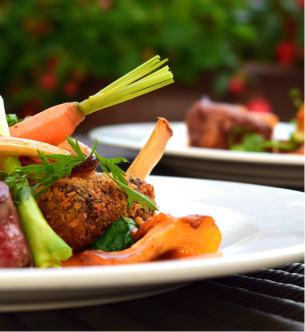Control Your Blood Sugar: A Guide to Vegetables and Low-GI Foods
If you’ve been diagnosed with pre-diabetes or early-stage diabetes, it’s crucial to take immediate action. Managing blood sugar levels through diet and exercise is key to preventing the condition from progressing. This guide, based on information from reputable health organizations, will help you understand which vegetables and low-GI foods can support healthy blood sugar control.
Vegetables You Can Enjoy Freely
Most vegetables are low in calories and high in fiber, making them a great choice for individuals managing their blood sugar. Fiber helps slow down the absorption of sugar into the bloodstream. Feel free to incorporate a variety of non-starchy vegetables into your daily meals.
Vegetables to Consume in Moderation
While vegetables are generally beneficial, some contain higher levels of carbohydrates. These include:
- Pumpkin
- Carrots
- Bellflower Root
- Lotus Root
- Burdock Root
- Chili Pepper Leaves
- Mugwort
- Young Garlic
- Seaweed Fulvescens (Maesaengi)
These vegetables contain over 6 grams of carbohydrates per serving (1 exchange unit). Therefore, it’s important to consume them in moderation and be mindful of portion sizes.
Besides vegetables, you can also freely enjoy seaweeds (such as kelp, seaweed, sea mustard, agar), and spices (such as mustard, vinegar, cinnamon, pepper, and lemon) in moderation.
Understanding the Glycemic Index (GI)
Blood sugar levels are influenced by various factors, including the amount and type of carbohydrates consumed. The Glycemic Index (GI) measures how quickly a food raises blood glucose levels after consumption. Foods with a low GI are digested and absorbed more slowly, leading to a gradual rise in blood sugar.
- Low GI: 55 or less
- High GI: 70 or more
Choosing low-GI foods can help maintain stable blood sugar levels. For instance, brown rice is a better choice than white rice due to its lower GI.
Here are some examples of foods and their approximate GI values:
- Soybeans: 18
- Milk: 27
- Apple: 38
- Grapes: 46
- Rye Bread: 50
- Brown Rice: 55
- Sweet Potato: 61
- Watermelon: 72
- Baked Potato: 85
- White Rice: 86
- Rice Cake: 91
Tips for Lowering the Glycemic Load of Your Meals
While the GI is a helpful tool, it’s not the only factor to consider. Some low-GI foods may be high in fat or otherwise unhealthy. Instead of solely focusing on GI values, prioritize adopting healthy eating habits that lower the overall glycemic load of your meals.
- Choose whole grains: Opt for brown rice over white rice and whole-wheat bread over white bread.
- Increase fiber intake: Incorporate plenty of high-fiber vegetables and seaweeds into your diet.
- Limit sugary fruits: Consume ripe or high-sugar fruits (such as persimmons, dried persimmons, and tropical fruits) in moderation.
Foods to Limit or Avoid for Blood Sugar Control
Certain foods are high in carbohydrates and calories, making them detrimental to blood sugar management. These include:
- Grain-based desserts: Cakes, cookies, pies, traditional Korean sweets.
- Sweetened dairy products: Flavored yogurts, condensed milk, chocolate milk, banana milk, strawberry milk.
- Canned fruits: Fruits preserved in syrup.
- Sweetened beverages: Sugary teas (like citron tea and quince tea).
- Other sweets: Candy, honey, jelly, chocolate, syrups, jams, taffy, Korean taffy, gum, rice syrup, corn syrup.
Choose Whole Foods Over Juices and Extracts
Whenever possible, choose whole fruits and vegetables over juices and extracts. Whole foods retain their fiber content, which helps slow down sugar absorption. Adding lemon juice or vinegar to your meals can also help lower the glycemic response.
When constructing your meals, aim for a balanced approach:
- Start with non-salty vegetable side dishes.
- Include protein sources like eggs, meat, or fish.
- Serve with mixed grain rice.
Chewing your food thoroughly and eating slowly can also contribute to better blood sugar control. While these lifestyle changes may require effort, they are essential for maintaining your health and well-being.




